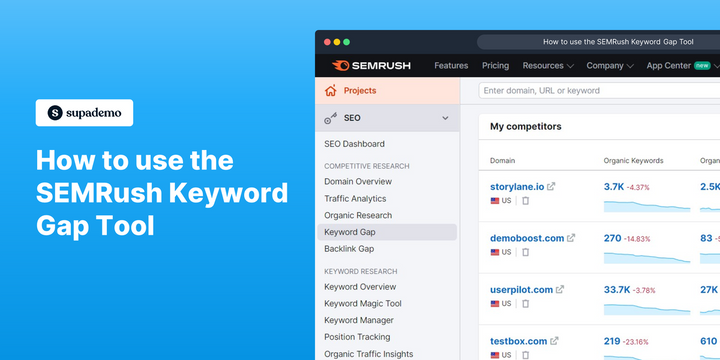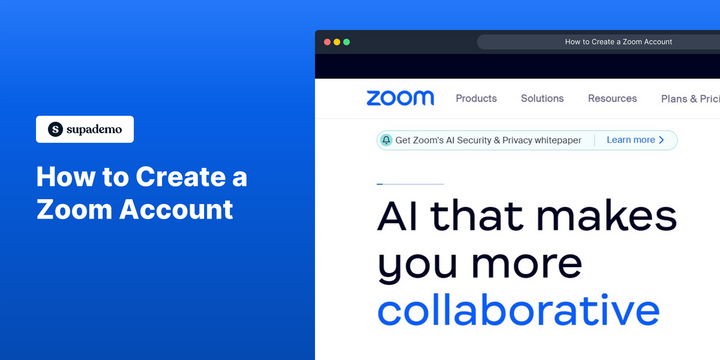Demos and interactive guides are an excellent tool for helping users navigate and utilize new products or software. When creating a demo software guide, you want to ensure that it is informative and easily understood by everyone.
However, creating a demo and interactive guide that can effectively serve a diverse user base with different levels of technical proficiency can be challenging. Studies showed that many organizations need help crafting demo software guides that engage their target audience.
A well-crafted demo and interactive guide must be accessible and valuable to all your users, irrespective of their technical proficiency. And this is important because a demo software guide can be the difference between an excellent customer experience and a terrible one.
This article will discuss strategies and tools for creating demo software guides that are all-encompassing and effective for users of all technical abilities.
By following the guidelines in this article, companies can ensure that their demo software guides are helpful for all users, regardless of their technical background.
Why it's important to tailor your demos and interactive guides to different audiences
• Inclusivity: A well-written demo and interactive guide ensures that all users, irrespective of their technical proficiency, can understand and use the product or service, promoting inclusivity and accessibility.
• Clear instructions: Demo and interactive guide provide clear instructions and guidelines on how to use a product or service, which helps users with varying levels of technical proficiency to understand the features and functionality of the product. It can prevent confusion and frustration for users who may not be familiar with the technology.
• Improved user experience: By providing demo and interactive guides tailored to a diverse user base, users are more likely to have a positive experience with the product or service. And this can lead to increased customer satisfaction and loyalty.
• Better support: Having demo and interactive guides available for users with varying levels of technical proficiency can also improve support for the product or service. Users can refer to the manual for troubleshooting and problem-solving, which can reduce the need for help from customer service.
• Increased adoption: When you make your demo and interactive guides accessible to a diverse user base, there are chances of increased product or service adoption. Users are more likely to use and recommend a product or service if they can understand and use it easily.
Challenges of Writing Demos and Interactive Guides for a Diverse user base
Determining how much detail to include
If the guide is too technical, it may be difficult for non-technical users to understand. And it may not provide enough information for more advanced users if it is not technical enough.
Choosing the right language & terminology
Technical terms and jargon can confuse non-technical users, so using clear and simple language is essential. At the same time, it is also important to provide enough information so that advanced users can understand the guide.
Creating a guide that's organized & easy to navigate for users of all levels
It might be challenging to create a demo software guide that is structured in a way that makes it easy for users to find the information they need, whether a beginner or an expert.
Understanding your user base
When making a demo and interactive guides for a product, it's essential to understand your user base's varying levels of technical proficiency. It means you have to deeply understand your users so that you can write demo software guides that are appropriate for their needs. It's also essential to consider the different ways that users may access and read the guide.
For example, some users may prefer a printable PDF. In contrast, others may select an online version they can access on their mobile devices. It is essential to ensure that the guide is formatted correctly and readable on different devices.
Simplifying technical jargon
When creating demo and interactive guides or instructions for your product or service, it can be tempting to use technical jargon or industry-specific language that all users may not easily understand.
To simplify technical jargon when writing demo and interactive guides, it is crucial first to identify the level of technical understanding of the intended audience. You can do this through user research, surveys, or focus groups.
Once you identify the audience, you can tailor the language and terminology to their level of understanding.
One effective technique for simplifying technical jargon is to use layperson's terms or everyday language to explain technical concepts. For example, instead of using the technical term "bandwidth," a demo and interactive guide could describe it as "the amount of data that can be transmitted at one time." It makes the concept easier for users who may need to become more familiar with technical terminology.
Another technique is to use visual aids such as diagrams, flowcharts, or images to explain technical concepts. These visual aids can help users understand complex ideas and processes more efficiently.
Additionally, it is vital to use a consistent writing style throughout the demo software guide and to break down instructions into smaller, manageable steps. That makes it easier for users to follow and understand the instructions.
Organizing & formatting the demo and interactive guide
When making your demo and interactive guide accessible to as many users as possible, it's crucial to organize and format it clearly and easily.
One way to do this is to use headings and subheadings to break the guide into sections. It makes it easy for users to find the information they need quickly and easily.
It's also helpful to include images and videos to supplement the text. That can make it easier for users to understand how to complete a task or concept. Some of your users may also prefer to consume information through audio, so you must also have that in mind.
In addition, providing examples and step-by-step instructions can be very helpful in making the guide easy to follow.
It's also important to consider the guide's layout, using whitespace and bullet points to make the information easy to read.
You should also consider the format of the guide. For example, a video tutorial may be more helpful for beginner users, while advanced users may prefer a more detailed written guide. As the guide above outlines, Supademo turns any process into a step-by-step demo interactive guide. All you have to do is turn on the extension or desktop app and run through your process.
Cut your documentation time in half while creating demo and interactive guides that are:
• Written and annotated.
• Easy to universally edit, store and share.
• Exportable or embeddable in any platform.
Testing & revising the demo software guide
The final step in creating your all-encompassing demos and interactive guide is to test it with a diverse group of users.
You can do this by giving the guide to a group of individuals with different levels of technical proficiency and asking them to try to complete a task using the guide. After the testing is complete, the feedback should be collected and used to revise the manual.
For example, if a beginner user needs help to understand a specific guide section, you should simplify the language used in that section. If an advanced user finds an area too simplistic, it'll help to provide more detailed information.
An example of an interactive guide:
Conclusion
Making demos and interactive guides for a diverse user base can be a challenging task. However, by following the guidelines listed above, it is possible to create demo and interactive guides that are both easy to understand and efficient for all users.
By putting the audience and their level of technical proficiency into perspective, you will be well-equipped to create a demo and interactive guides that will resonate with all your users and meet their needs.





